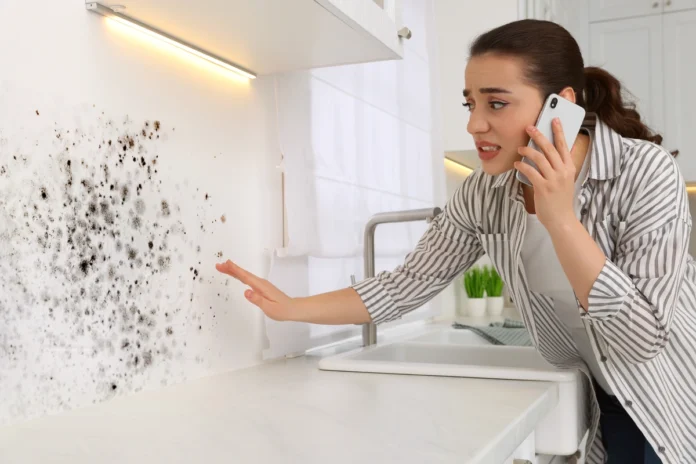Table of Contents
- Introduction
- Act Quickly to Remove Standing Water
- Use Dehumidifiers to Control Humidity
- Inspect Hidden Areas for Moisture
- Remove and Replace Damaged Materials
- Clean and Sanitize Affected Areas
- Maintain Proper Ventilation
- Monitor Indoor Humidity Levels
- Seek Professional Assistance When Necessary
Introduction
Water damage can strike unexpectedly anytime, from sudden storms, plumbing failures, or unnoticed leaks. Acting quickly to address excess moisture is critical—not only to preserve the structural integrity of your property but also to prevent hidden health hazards like mold infestations. Mold can develop in damp conditions within 24 to 48 hours, triggering allergies, respiratory problems, and compounding property damage. Homeowners should understand practical strategies for managing water emergencies and controlling moisture to keep their homes healthy and resilient. For those needing expert help with water damage restoration Denver services offer professional support to restore safety and comfort after water incidents.
Swift mitigation is vital, as mold spores are always present in the air and only require moisture and organic material to start spreading. The longer surfaces remain wet, the greater the risk of persistent mold problems that can impact air quality and lead to expensive repairs.
Mold prevention is ultimately about keeping moisture at bay. Each step outlined below addresses a key part of this process, ensuring visible and hidden hazards are controlled after water-related emergencies. For additional background information on mold dangers and effective drying strategies, the Environmental Protection Agency (EPA) provides a comprehensive homeowner’s guide.
Act Quickly to Remove Standing Water
The first 24 hours after water damage are crucial for minimizing mold risk. Begin by removing all standing water from affected areas use mops, towels, or wet/dry shop vacuums depending on the severity. If flooding is extensive or water has seeped into walls and flooring, don’t hesitate to call professionals to manage the extraction process with industrial-grade equipment. Swiftly relocating furniture and other belongings to dry locations reduces the risk of water saturation and mold development.
Use Dehumidifiers to Control Humidity
Excess moisture lingers in the air and within building materials even after visible water is eliminated. Rapid drying is best achieved by running high-capacity dehumidifiers in the affected zones, maintaining a target humidity level between 30% and 60%. Keep doors and windows shut while dehumidifiers run for best results, and use fans to circulate air. Regularly check and empty water reservoirs, or use continuous drainage if available. Monitoring with a hygrometer allows for precise adjustments to dryness levels.
Inspect Hidden Areas for Moisture
Mold can take hold where you least expect it behind drywall, under carpets, inside insulation, and within HVAC systems. Use moisture meters if you have them, or hire professionals with infrared cameras and other tools to pinpoint moisture pockets. Pay extra attention to areas near baseboards, floors, and where walls meet ceilings, as water often travels and hides in these locations. Early detection prevents deeper structural issues and harder-to-eradicate colonies.
Remove and Replace Damaged Materials
Carpets, padding, drywall, and insulation usually can’t be salvaged once soaked through. Even if they appear dry on the surface, internal moisture can provide the perfect breeding ground for mold. Dispose of water-damaged porous materials quickly and replace them with new, dry alternatives. This not only interrupts mold’s ability to spread but also fosters a thorough and complete drying process in the rest of the structure.
Clean and Sanitize Affected Areas
After removing water and damaged items, it is essential to disinfect all exposed surfaces. Use a solution specifically designed to combat mold and bacteria many commercial cleaners fail against tough spores. Carefully scrub surfaces, paying attention to corners and seams where moisture can linger. Professional restoration companies employ medical-grade antimicrobial agents for thorough coverage, ensuring future mold growth is suppressed.
Maintain Proper Ventilation
Ensuring adequate airflow in kitchens, bathrooms, laundry rooms, and basements greatly aids in continued moisture control. To optimize air movement, use exhaust fans routinely, open windows when climatic conditions allow, and service HVAC systems annually. Good ventilation helps dry damp spaces and prevents moisture from building up in your home’s most vulnerable spots.
Monitor Indoor Humidity Levels
Once repairs are complete, monitor indoor humidity as part of your routine. Place hygrometers in different rooms, especially in previously affected zones. Ideally, levels should remain below 50% for long-term mold prevention. Adjust humidifiers, use air conditioners during humid weather, and pay attention to weather-driven fluctuations in moisture inside the home. The Centers for Disease Control and Prevention (CDC) also highlights the importance of sustained humidity control for long-term mold management.
Seek Professional Assistance When Necessary
Sometimes, DIY solutions aren’t enough especially in extensive flooding, persistent musty odors, or visible mold growth. Trained restoration and mold remediation experts have the tools and training to safely resolve even severe contamination, ensuring complete drying and restoration. If you suspect underlying mold or water issues, don’t delay professional help for a thorough evaluation and corrective action.
Proactive mold prevention after water damage is a multi-step process requiring quick action, ongoing monitoring, and thorough moisture control. By following these best practices removing water promptly, drying and ventilating fully, and not hesitating to call in experts when needed you can protect your family and your investment from the lasting effects of mold growth.

